Friday Matinee Special: Nuclear Materials Innovation
(This post is the first of a series showing presentations given at the American Nuclear Society's 2017 Annual Meeting, held in San Francisco in June.)
The ANS Nuclear Cafe is a blog owned and edited by the American Nuclear Society. Information contained on the ANS Nuclear Cafe has been provided by numerous sources. Therefore, the American Nuclear Society assumes no responsibility or liability for the accuracy of information contained herein. DISCLAIMER: The views expressed in posted articles do not necessarily reflect the views of the American Nuclear Society. The views expressed here are those of the individual authors. ANS takes no ownership of their views. The American Nuclear Society assumes no responsibility or liability for any use or operation of any methods, products, instructions, or ideas contained on this site.
Your most critical assets deserve more than just fences and cameras. NV5’s cutting-edge layered security solutions extend detection and response beyond traditional perimeters. From advanced geospatial analytics to integrated surveillance and access control, NV5 helps you stay ahead of threats before they breach your defenses. Learn more.
(This post is the first of a series showing presentations given at the American Nuclear Society's 2017 Annual Meeting, held in San Francisco in June.)
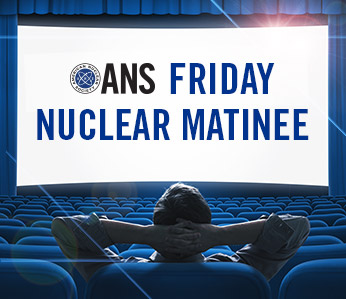
Our ANS Nuclear Cafe "Friday Nuclear Matinee" feature this week is a brand new video produced by the IAEA (International Atomic Energy Agency) entitled "What is the Future of Nuclear Energy?" This fact-filled three-minute video is a good primer for the future of nuclear power. We hope you enjoy it!
Whenever I turn on the news and hear how America should generate its electric power, hardly any "expert" cites nuclear energy. Energy discussions are especially prominent now, since the United States decided to pull out of the Paris climate agreement. What is so striking to me is that nuclear is almost never talked about, and when it is, it's normally an afterthought to other sources of energy. America's largest source of clean power is nuclear, which makes up roughly 20 percent of all power generation, and it should take a more prominent role. This got me wondering, why isn't nuclear talked about more as a solution? As a nuclear engineer, my opinion, albeit a bit biased, is that we need nuclear energy in our energy mix.
Reports out of China emerged earlier this week that Sanmen Unit 1, the first Westinghouse AP1000 unit expected to start up, had "been commissioned." These reports quoted an official speaking at a professional conference.
I am the new student director for the American Nuclear Society. I will be representing students on the ANS Board of Directors for the next two years.
More than the usual number of nuclear energy-related news items have come to the fore this week, so we'll touch on each significant development and provide links for further reading.
On the wall in my office hangs a picture of what appears to be an ordinary fellow. His short, dark hair is combed back in typical 1960s fashion, and the spectacles, coat and tie he wears give him a decidedly establishment look.
Science hasn't always been his strongest suit, but he has grown up to be a businessman who, despite his lack of diplomatic conduct, has managed to successfully negotiate the most challenging deal of all- becoming president of the largest economy in the world. Why then, is this businessman's decision to pull out of an environment deal met with harsh criticism and distrust?
In a stunning but not wholly unexpected move, newly elected South Korean president Moon Jae-In announced during a ceremony marking the final shutdown of Kori Unit 1 that future nuclear power plants in South Korea will be cancelled and that the country will begin to shift toward renewables for its future energy needs-backed by natural gas.
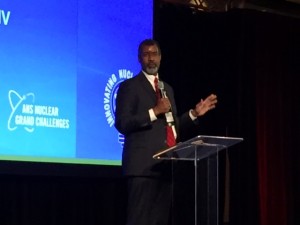
OECD Nuclear Energy Agency Director-General Bill Magwood speaks at the ANS 2017 Annual Meeting. Photo credit: Tari Marshall.
Attendees of the 2017 American Nuclear Society Annual Meeting were fortunate to hear an address by William Magwood, the former NRC Commissioner. Magwood is currently the Director-General of the Nuclear Energy Agency (NEA) of the OECD. He addressed the ANS members on the ANS Grand Challenges developed under the leadership of (now immediate past-President) Andy Klein.
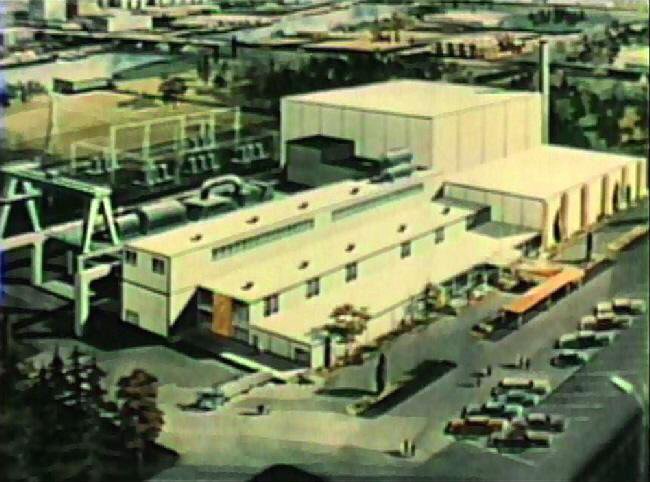
A hopeful nuclear industry is once again considering many advanced designs - a throwback to the 1950's and 1960's. Shown, proposed 100 MWe organic cooled nuclear plant proposed by Atomics International in the 1960's. Illustration from Will Davis collection.
The spirit of hope, even in the face of what ANS President Andy Klein acknowledges as "tough times" for nuclear energy, has made itself more than evident at the 2017 Annual Meeting. The spirit can be found everywhere, and it was further promoted on Monday morning as a new style of presentation for the opening plenary -- itself innovative -- was delivered to an excited audience.
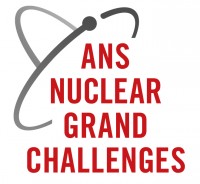 As I considered how ANS could best forward the interests of nuclear professionals during my term as president (June 2016-June 2017), I was compelled by the idea of identifying the technical nuclear challenges that need to be resolved by 2030 in order to help solve some of the economic, sociological, or political issues that we face as a society.
As I considered how ANS could best forward the interests of nuclear professionals during my term as president (June 2016-June 2017), I was compelled by the idea of identifying the technical nuclear challenges that need to be resolved by 2030 in order to help solve some of the economic, sociological, or political issues that we face as a society.
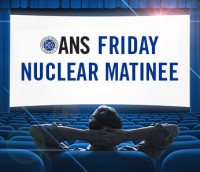 Our Friday Matinee feature this week is a short video from Southern Nuclear commemorating the 30th anniversary of the startup of Plant Vogtle Unit 1. Various employees look back at the time of the startup and capture their feelings for us to share in. We hope you enjoy "Plant Vogtle - Memories at 30."
Our Friday Matinee feature this week is a short video from Southern Nuclear commemorating the 30th anniversary of the startup of Plant Vogtle Unit 1. Various employees look back at the time of the startup and capture their feelings for us to share in. We hope you enjoy "Plant Vogtle - Memories at 30."
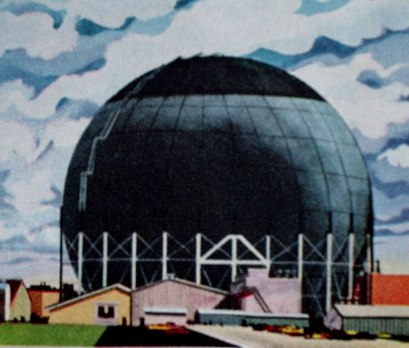
SIR (Submarine Intermediate Reactor) as shown in Bechtel Corporation advertisement, in Will Davis' library.
The now-obscure and thick "Atoms for Peace Manual" published in 1955 by the U.S. Government Printing Office (and presented by Senator Alexander Wiley) contains, near its end, a curious and also now-obscure event in atomic energy history: The first commercial sale of atomic-generated electricity. And thereby hangs a tale.
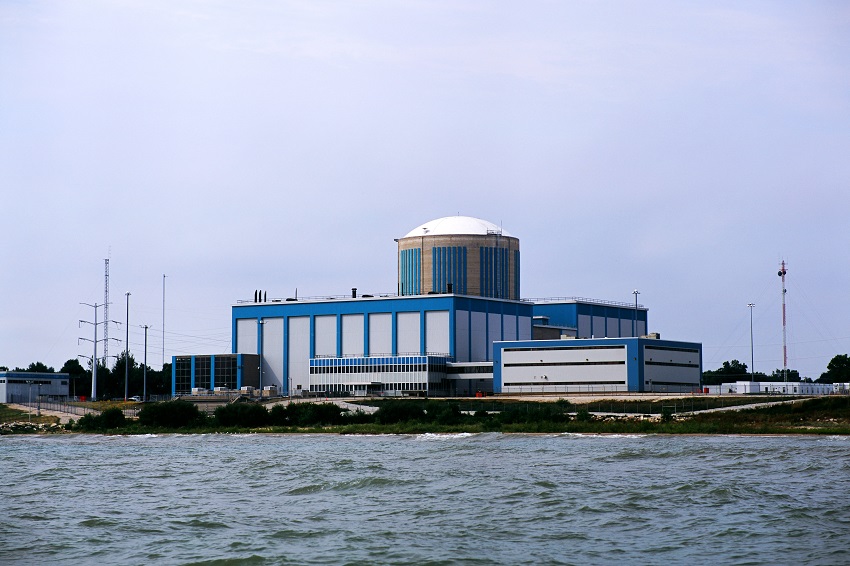
Lost to us now- the Kewaunee Nuclear Plant, shut down permanently in May, 2013.
This week, the American Nuclear Society (ANS) announced the approval and publication of its latest position statement, which addresses the existential threat faced by the nation's commercial nuclear power plants.
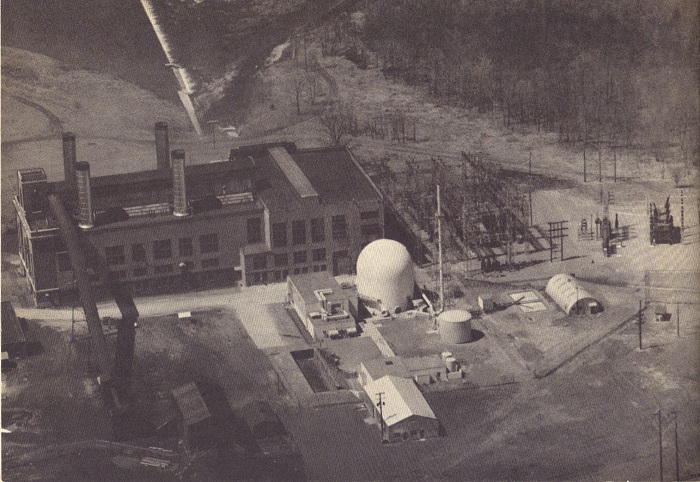 There's talk in some circles these days about selecting fossil-fueled power plants and adding nuclear reactors to them in order to "repower" them without emissions. One early example, the Saxton Experimental Reactor, is seen above in a photo from my collection*. There are some important things to think about before this is tried on a plant; here are five things to consider:
There's talk in some circles these days about selecting fossil-fueled power plants and adding nuclear reactors to them in order to "repower" them without emissions. One early example, the Saxton Experimental Reactor, is seen above in a photo from my collection*. There are some important things to think about before this is tried on a plant; here are five things to consider:
What is at stake for the U.K. industry and research centers?
[embed]https://youtu.be/Kco8nLWMfO0[/embed]
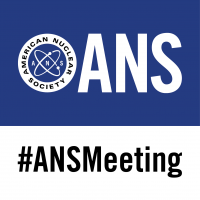 I was fortunate enough to have the opportunity to go to the American Nuclear Society meeting in Las Vegas in November 2016, although it was by happenstance. I had contributed to a paper that was to be presented at the meeting but the author was unable to attend, so I was sent instead. To be honest, at the time I was more excited, as a naïve college student, to get a university-sponsored trip to Las Vegas than by participating in the conference itself. What college student wouldn't jump at the opportunity to lose every cent of his single-digit bank account to a slot machine? I couldn't have been more wrong.
I was fortunate enough to have the opportunity to go to the American Nuclear Society meeting in Las Vegas in November 2016, although it was by happenstance. I had contributed to a paper that was to be presented at the meeting but the author was unable to attend, so I was sent instead. To be honest, at the time I was more excited, as a naïve college student, to get a university-sponsored trip to Las Vegas than by participating in the conference itself. What college student wouldn't jump at the opportunity to lose every cent of his single-digit bank account to a slot machine? I couldn't have been more wrong.